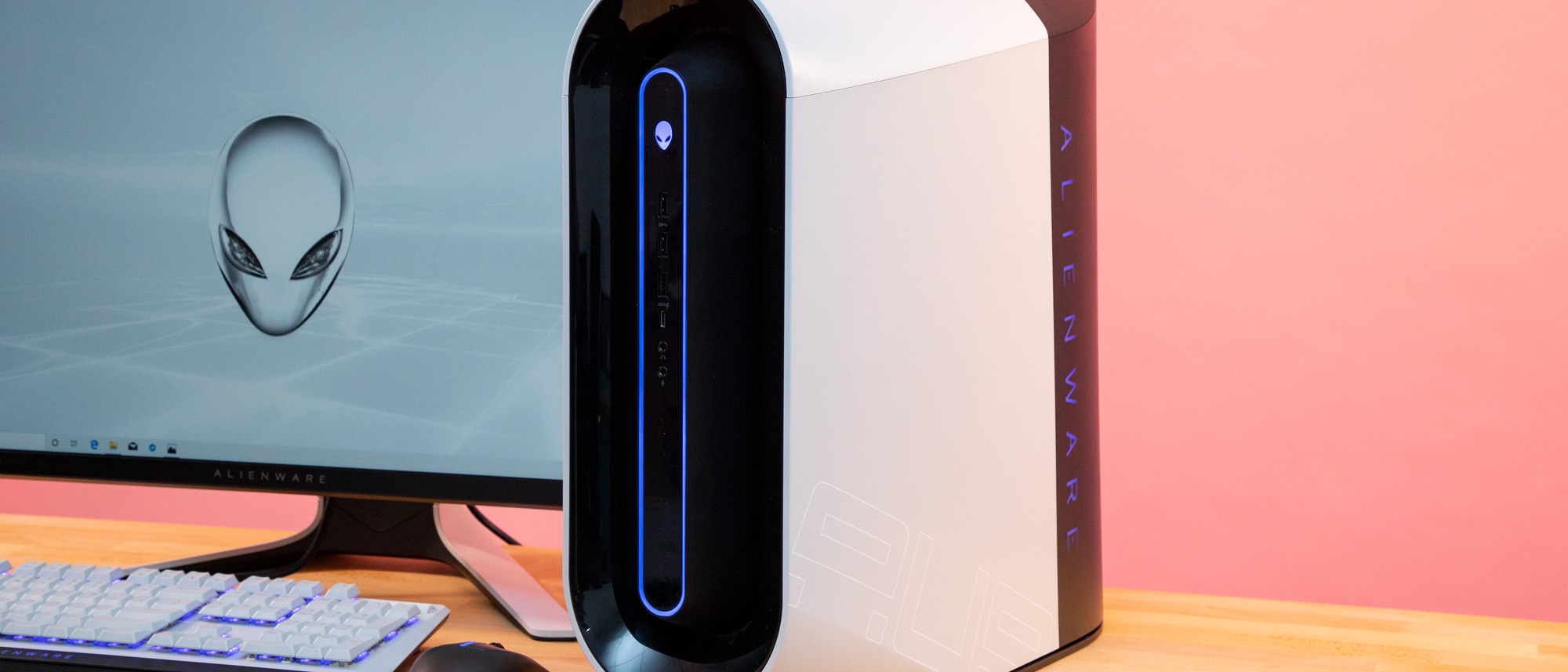Tom's Guide Verdict
The Alienware Aurora R10 offers blisteringly fast performance and easy upgradability, within an attractive, unique design.
Pros
- +
Attractive design
- +
Very easy to upgrade graphics
- +
Sleek, customizable RGB lighting
- +
Blistering gaming and CPU performance
Cons
- -
Can get expensive
Why you can trust Tom's Guide
Earlier this year, the Alienware Aurora got a much-needed design refresh that made the company's flagship desktop as sleek, curvy and stylish as the Alienware gaming laptops, which are some of the best gaming laptops you can buy. Now, Alienware has infused that improved design with AMD power for the first time in years. The result is the Alienware Aurora R10 Ryzen Edition ($3,629 as tested), an attractive powerhouse that offers improved lighting and airflow, while maintaining the painless upgradability of previous models.
We've long considered the Aurora to be the best gaming PC you can buy, and the new Aurora R10 Ryzen Edition is one of the line's best iterations yet. Just be ready to pay up if you want to experience this PC at its full potential.
Alienware Aurora R10 price and configurations
We reviewed a tricked-out $3,629 configuration of the R10 Ryzen Edition, which packs an AMD Ryzen 9 3950X CPU, 32GB of RAM, a 1TB NVMe M.2 SSD and an Nvidia RTX 2080 Ti graphics card.
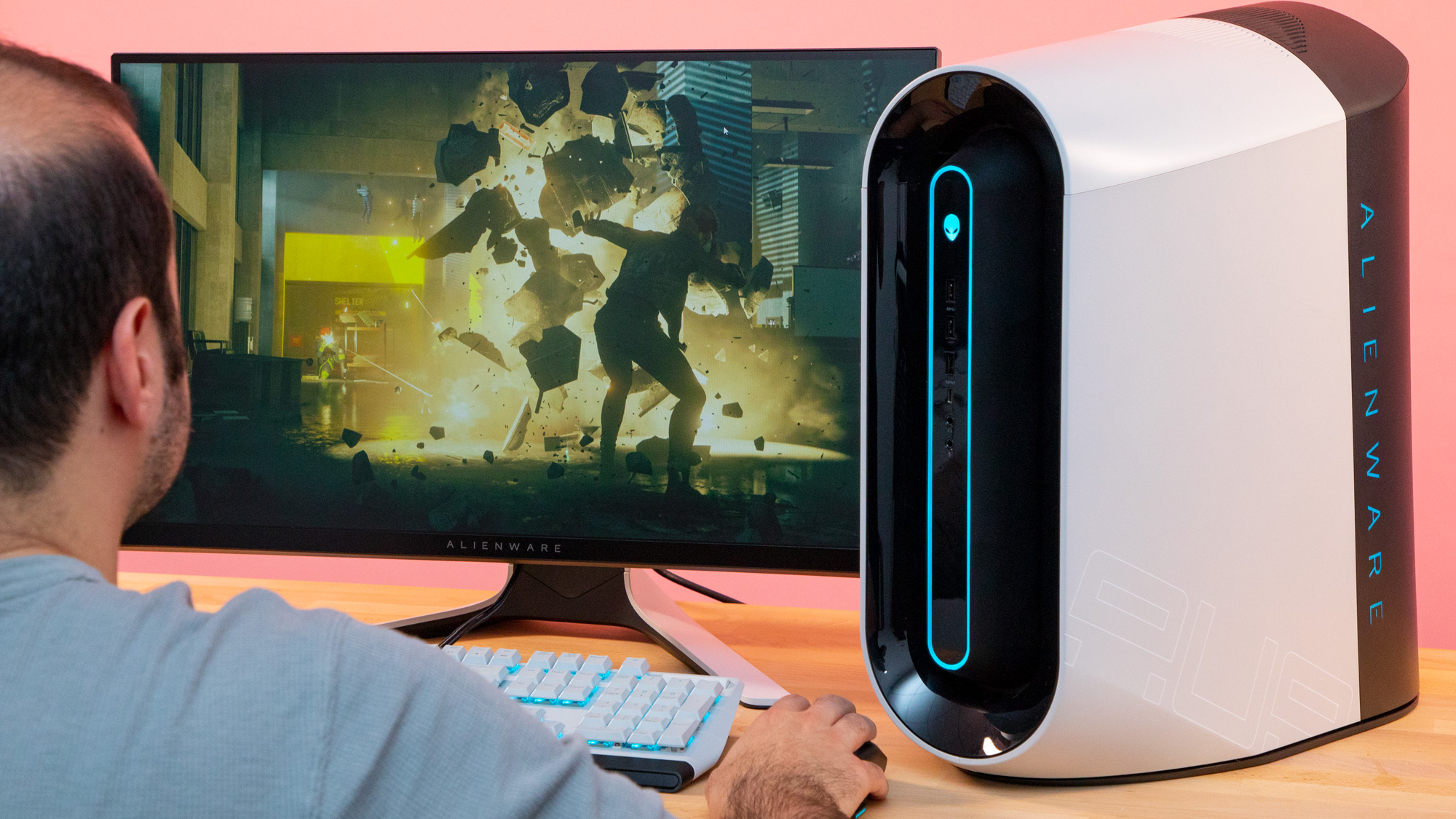
We don't yet have pricing for the starting configurations of the Aurora R10. However, we do know that the system will offer CPU options of Ryzen 5 (3500, 3600, 3600X), Ryzen 7 (3700X, 3800X) and Ryzen 9 (3900, 3900X, 3950X). GPU options start with Nvidia's GeForce GTX 1650 and go all the way up to dual Nvidia RTX 2080 Ti cards, while memory options range from 8GB to 64GB of RAM. Storage choices start at a single 1TB, 7,200-rpm SATA drive and go up to a 2TB SSD with a 2TB SATA drive.
Alienware Aurora R10 design and lighting
At long last, Alienware has overhauled the Aurora's design to align with the clean "Legend" aesthetic from the company's gaming laptops. Debuting on the Aurora R9 and now featured on the R10, the new design trades in the boxy gray of the original model for a curvier, sleeker design with a two-tone paint job.
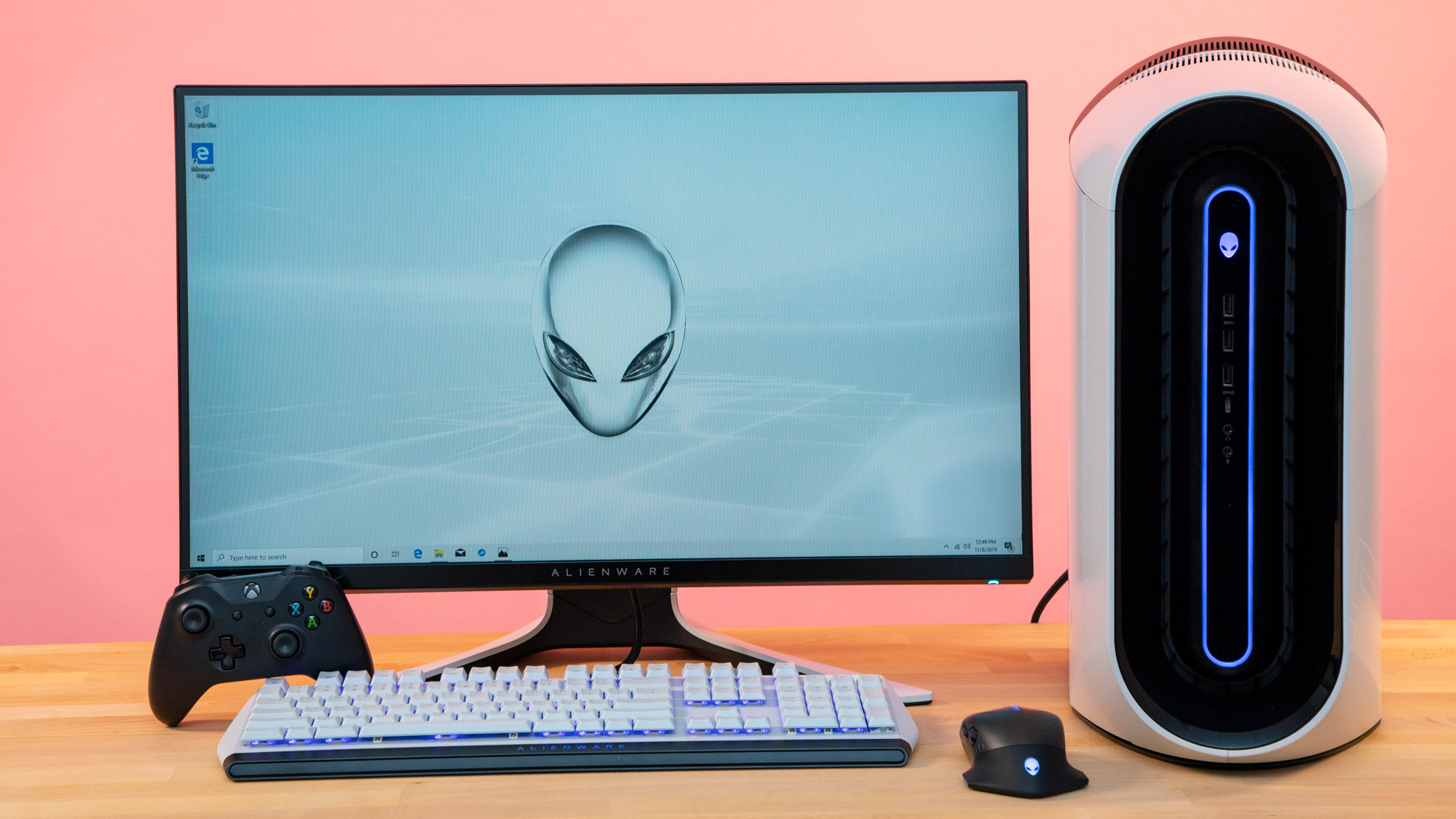
The Aurora R10's concave front panel and surplus of vents kind of make it look like a giant space heater or air purifier. However, I dig the cleaner look and find it to be a much-needed refresh of a PC that was starting to look stagnant. The new design is optimized for better airflow, and aside from a few loud whirs at startup, it stayed relatively quiet during my time with it. Our review unit came in a crisp Lunar White, though I also like the dark gray Dark Side of the Moon variant.
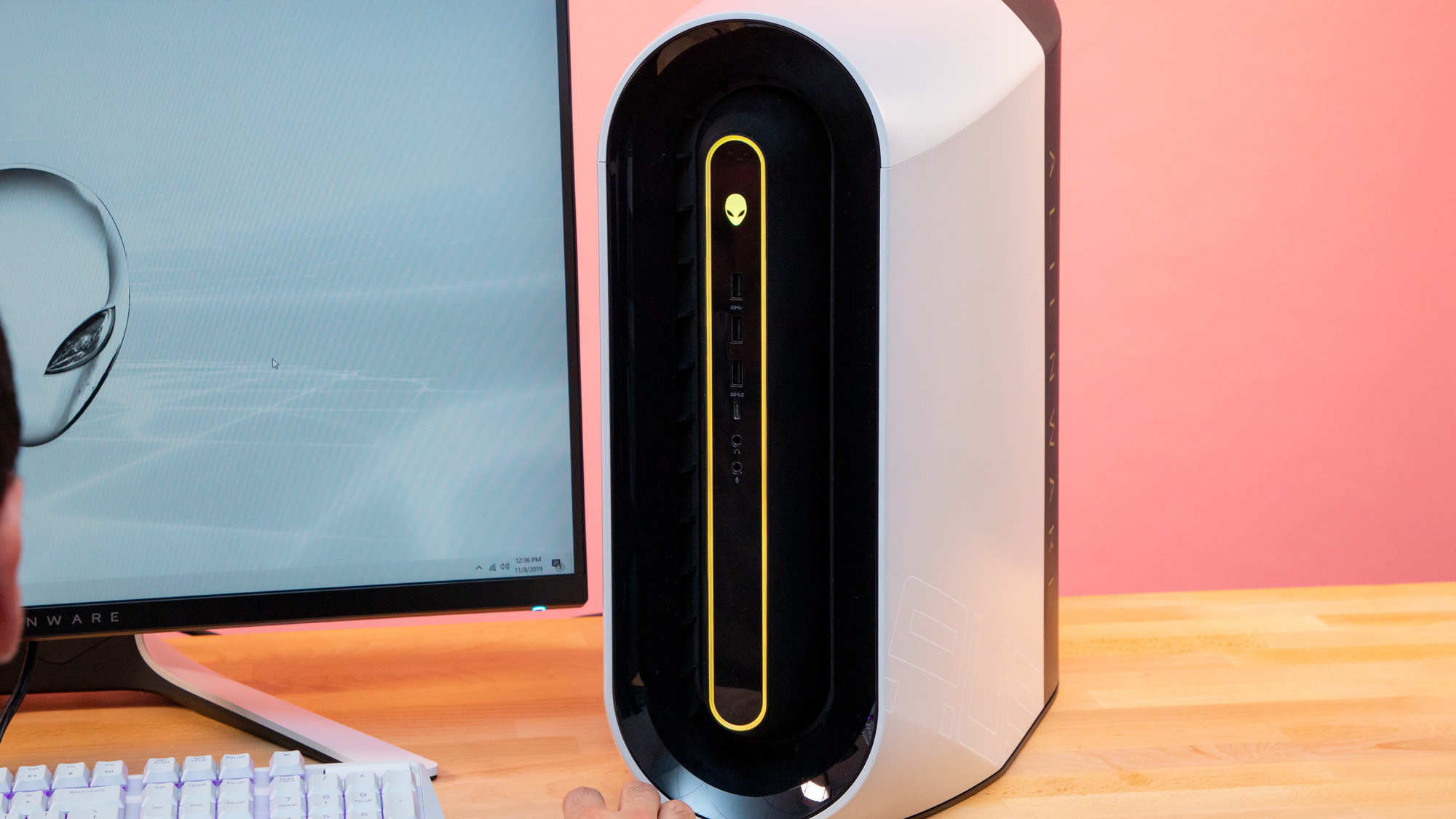
It wouldn't be an Aurora desktop without a healthy dose of RGB lighting, this time located on an ovular strip on the front panel, as well as on an Alienware logo on the right side. This lighting is both more prominent and more attractive than it was in the old design, and you can customize it to your heart's content via the Alienware Command Center software. I had a good time tweaking the three customizable zones with different colors and patterns, and I appreciate that you can sync specific color themes with specific games.
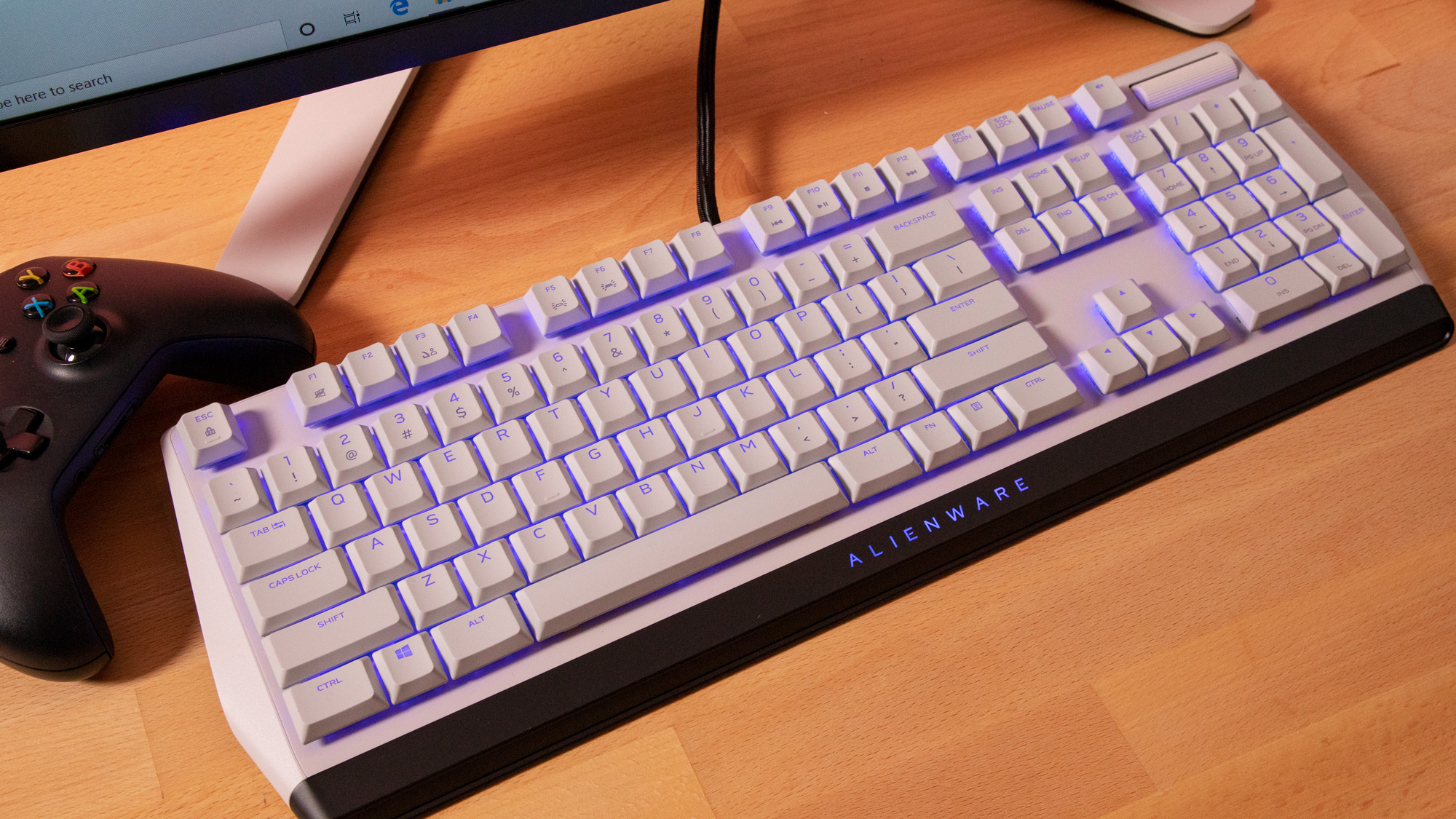
At 18.9 x 17.0 x 8.7 inches and 39 pounds, the Aurora R10 will demand a decent amount of space on your floor or desk, and you should probably stretch before lugging it to a LAN party. The Aurora is a bit bulkier than the HP Omen Obelisk (17.0 x 14.0 x 6.5 inches), much bigger than Dell's compact G5 Gaming Desktops (14.5 x 6.7 x 12.0 inches) and about on par with boutique machines like the Maingear Rush.
Alienware Aurora R10 ports and upgradability
The Alienware Aurora R10 packs just about any connection you'd need for gaming and creating content, with all manner of peripherals and displays. Up front, you've got three USB 3.1 Type-A Ports, as well as a PowerShare-enabled USB-C port.
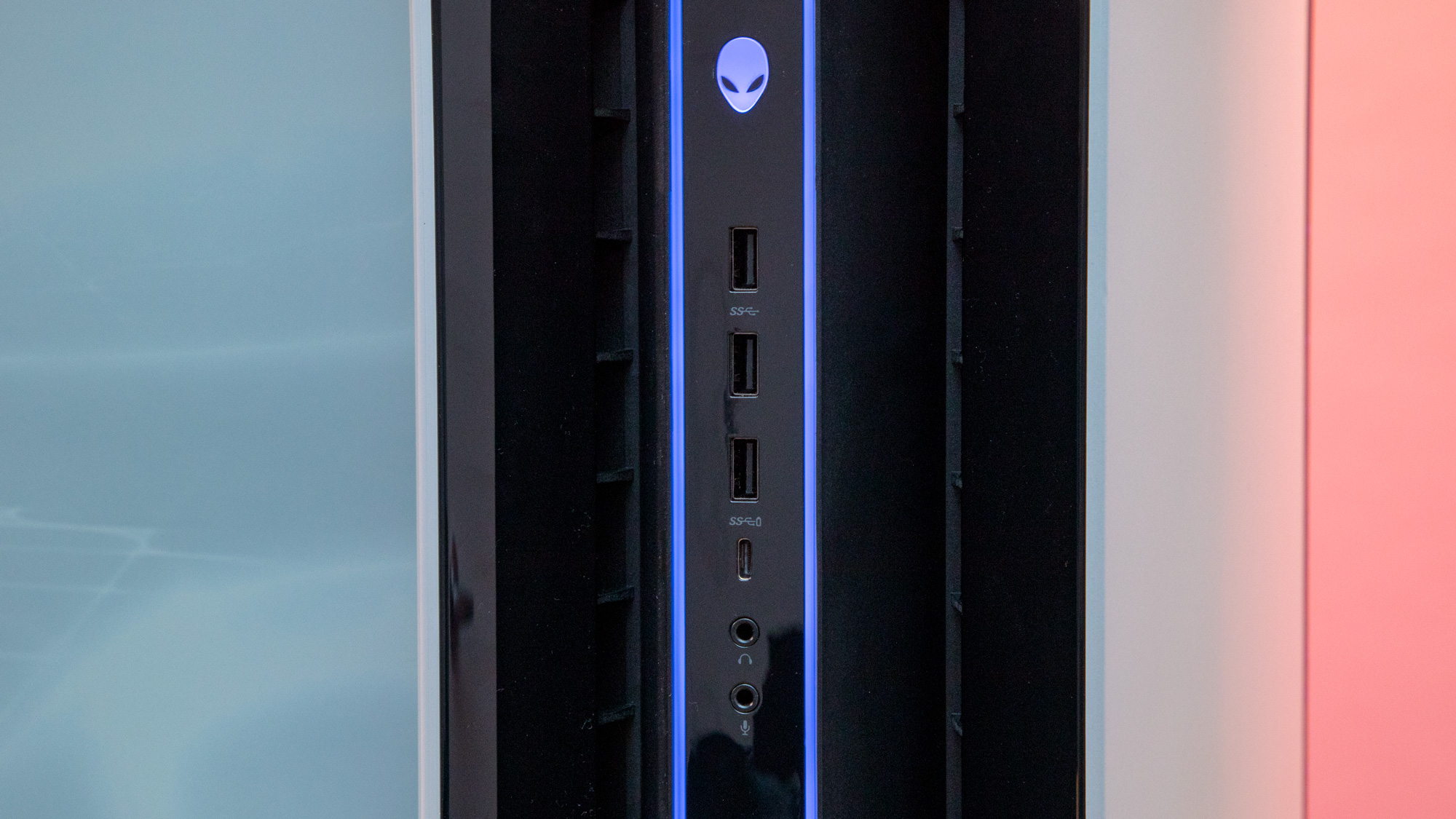

Your usual assortment of connections sits in the back, including five USB 2.0 ports, four USB 3.1 Type-A ports and a USB-C port. There's also a RJ-45 Killer E2500 Gigabit Ethernet port and a full suite of audio connections for speakers and subwoofers. For your display needs, the machine's Nvidia GeForce RTX 2080 Ti packs an HDMI port, three DisplayPorts and a USB-C port.
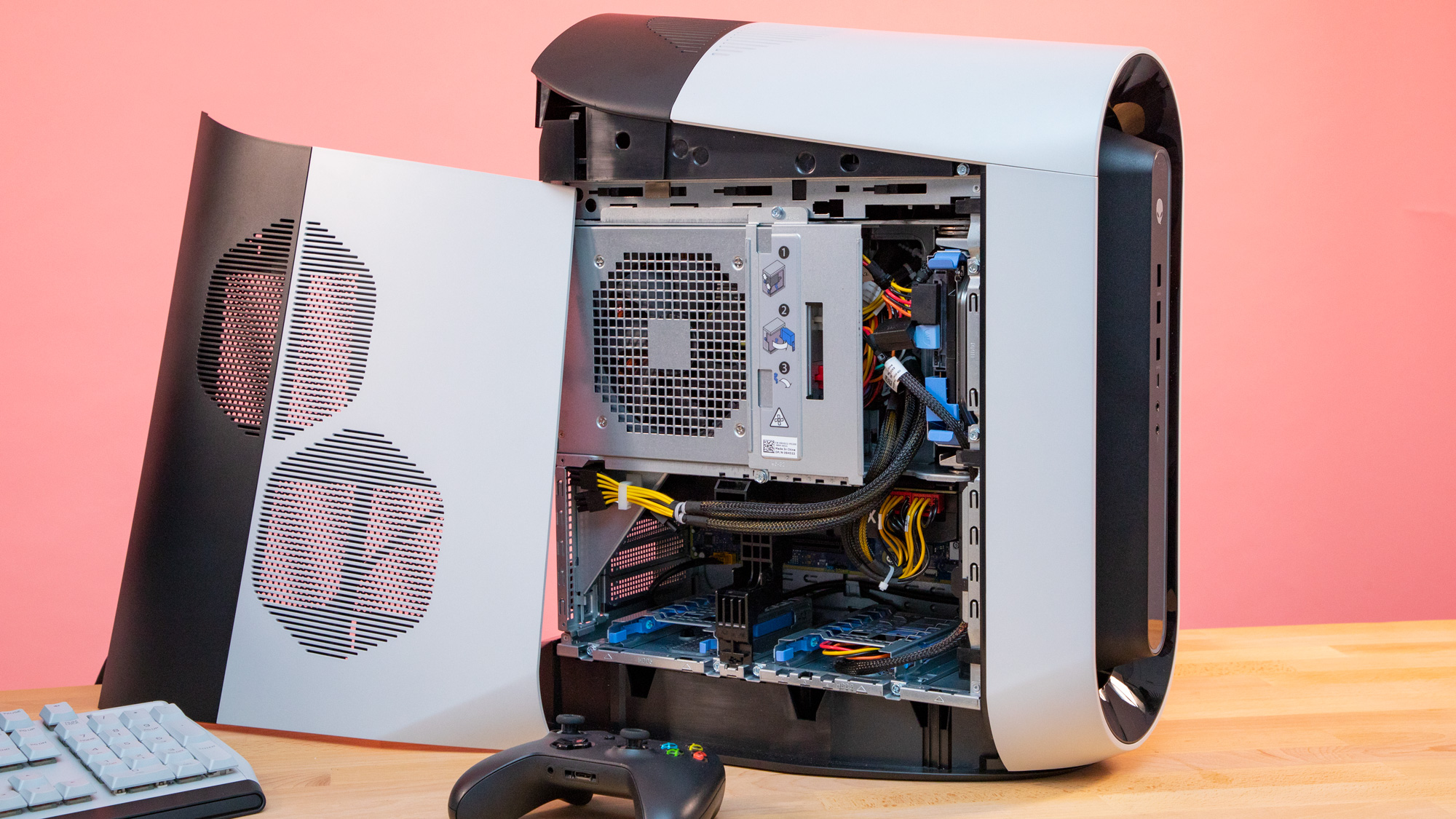
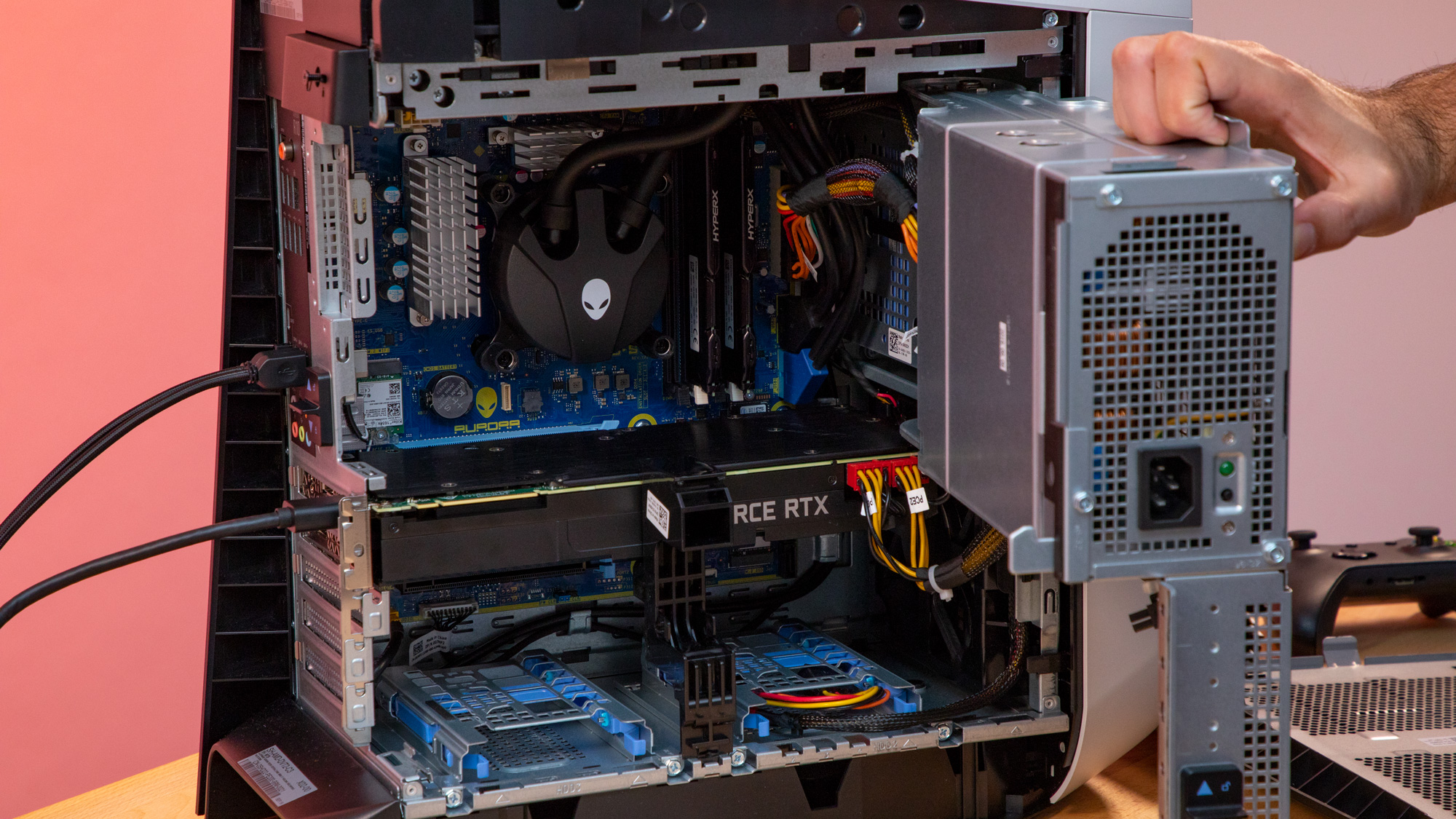
While its external design has changed, the Aurora has remained easy to upgrade on the inside. With a quick flip of a few locks and switches, you can pop off the side panel, slide out the power supply, and remove the GPU and RAM without any tools. Just be ready to bust out a screwdriver if you need to mess with the cooling supply or CPU.
Alienware Aurora R10 gaming performance
Packing an Nvidia GeForce RTX 2080 Ti, the Aurora R10 tore through every AAA game we threw at it, even at 4K with all settings cranked up.
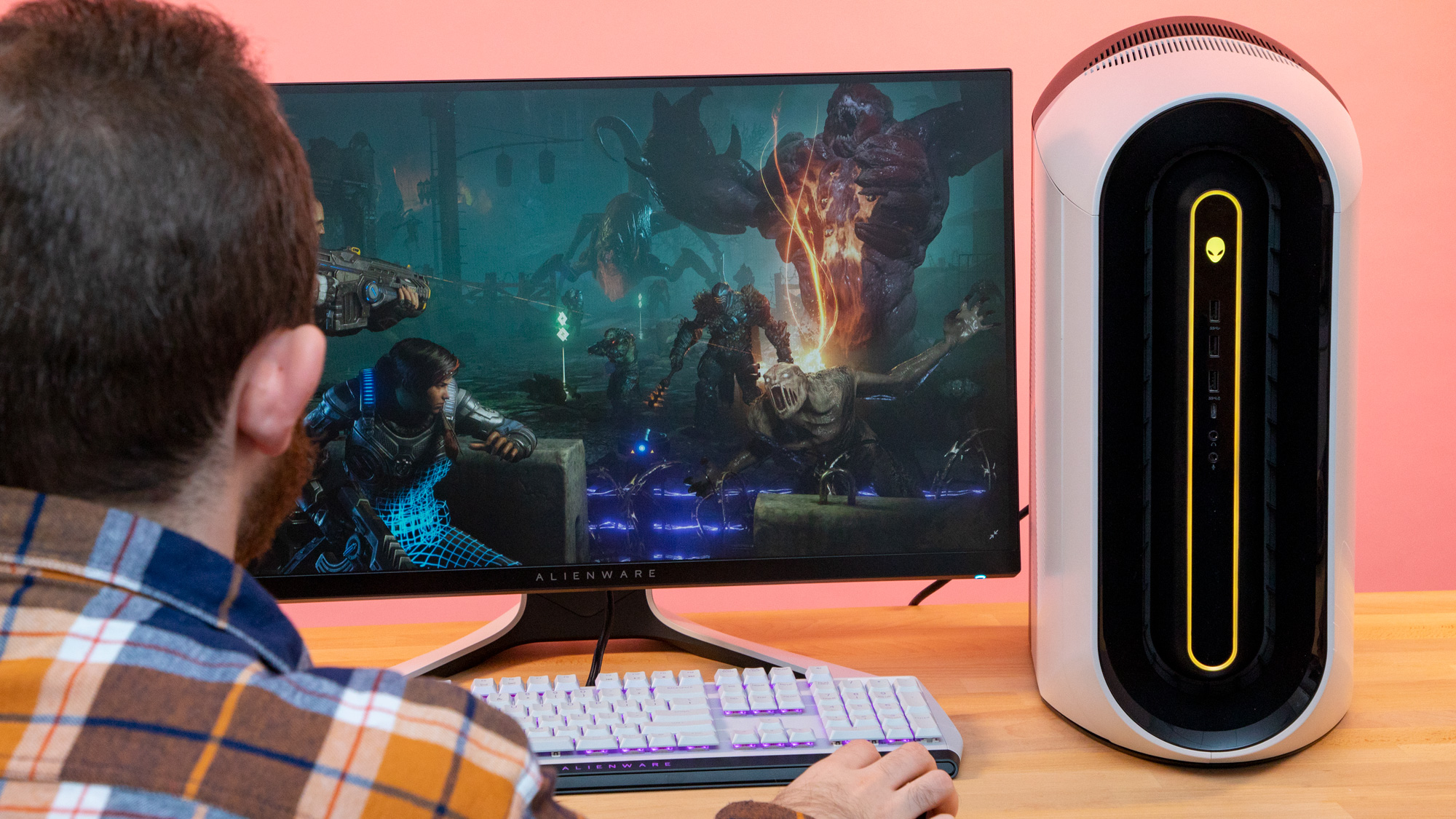
The R10 ran the orc-slaying action of Middle-earth: Shadow of War at a nice 69 frames per second at 4K and max settings, and a blistering 136 fps at 1080p. By comparison, the 2080 Ti-equipped Omen Obelisk turned in 4K and 1080p scores of 65 and 145, respectively.
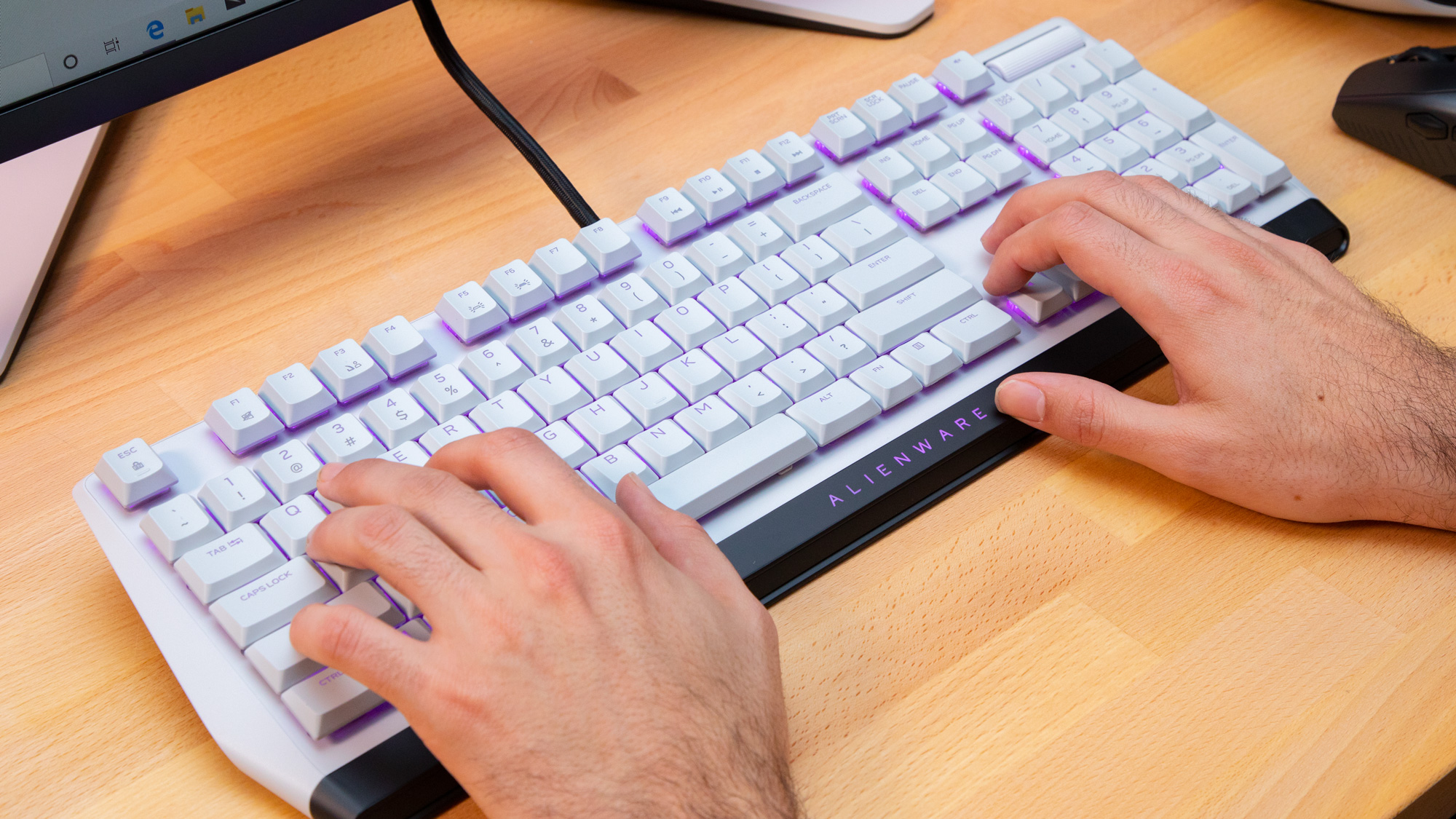
The Aurora achieved similarly impressive scores on the Far Cry: New Dawn benchmark, running the open-world shooter at 71 fps at 4K and 88 fps at 1080p. That tops the Obelisk's 4K score of 67 but trails that machine's 1080p result of 105 fps.
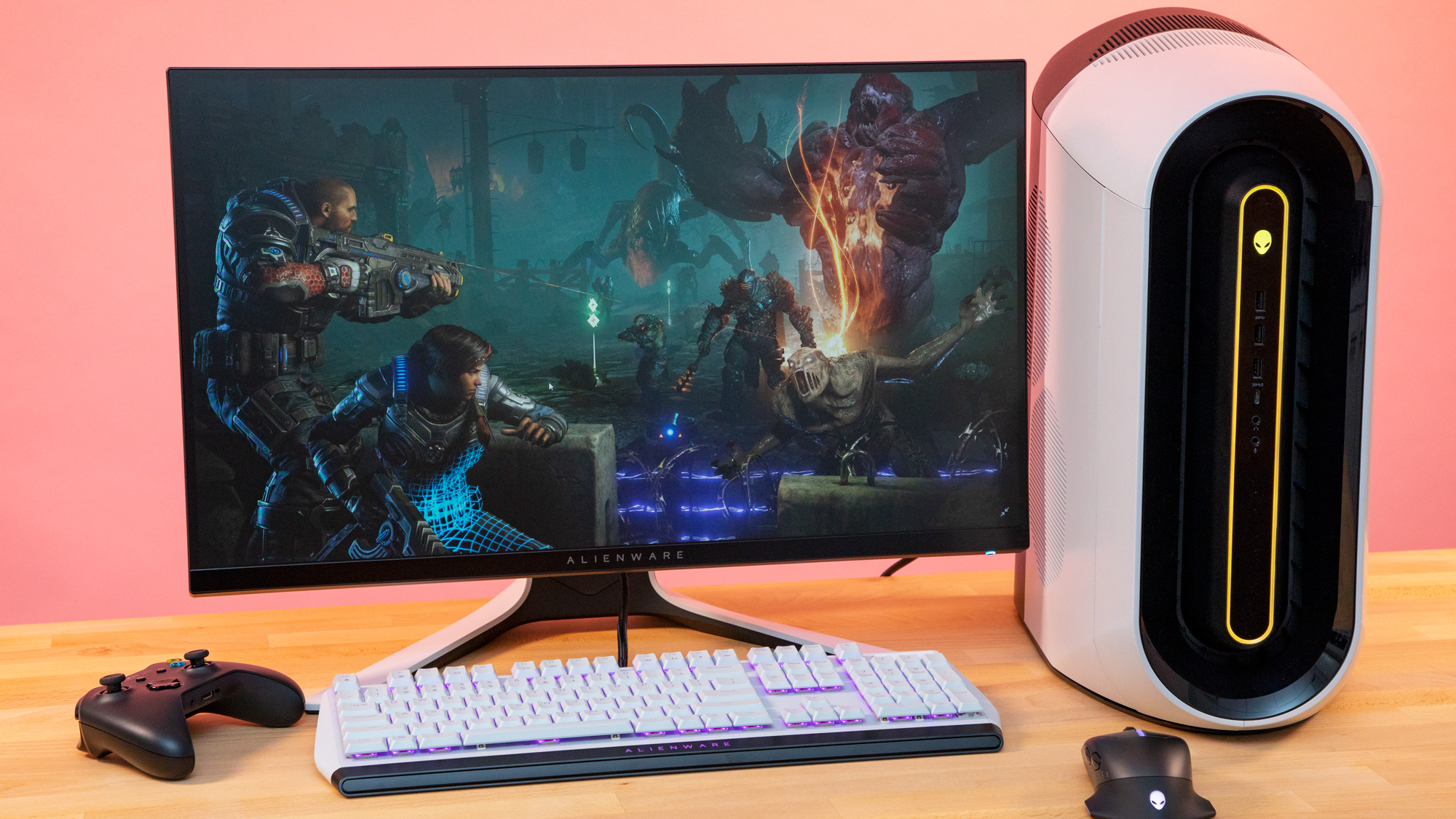
Alienware's desktop ran the brand-new PC port of Red Dead Redemption 2 at an impressive 41 fps at 4K and max settings and a smooth 80 fps at 1080p. This is the first machine on which we've tested Rockstar's open-world Western, but these scores should give you a good idea of what to expect on an RTX 2080 Ti machine with a powerful CPU.
MORE: Best Gaming PCs - Desktop Computers
In synthetic benchmarks, the Aurora R10 netted a strong 7,874 on the 3DMark Fire Strike Ultra test, topping the Obelisk (7,290) but falling short of our 9,082 average.
Alienware Aurora R10 overall performance
The Aurora R10 is the first Aurora model in several years to offer AMD processors. And if the performance we got from the Ryzen 9 3950X and 32GB of RAM in our machine is any indication, this is a welcome return.

The R10 blazed through the Geekbench 4.3 overall performance test with a score of 52,626, running circles around the HP Omen Obelisk (34,167) and our 35,599 gaming desktop average.
MORE: Gaming Desktop Buying Guide: 7 Things You Need to Know
The Aurora's 1TB SSD copied about 5GB of files in just 5.4 seconds, resulting in a zippy transfer rate of 920 MBps. While that's not quite as speedy as the showing from the Omen Obelisk's dual 512GB SSDs (1,696 MBps), the Aurora's results top those from the Corsair One i160's 480GB SSD (757 MBps) and our 656-MBps average.
Alienware Command Center
The Aurora R10 sports an improved version of Alienware's Command Center software, which lets you manage your system performance and game library in addition to customizing the backlighting. The app will automatically detect any games on your system and let you program specific themes for them (including custom lighting and power modes). You can also monitor your CPU and GPU temperature and usage and toggle overclocking for when you need extra performance. There's also the aforementioned Alienware FX lighting menu, which makes it easy to play with the lighting for the Aurora, as well as any Alienware peripherals you have hooked up.
Bottom line
If you're looking for an AMD-powered gaming PC that can be configured with incredibly powerful components and can be upgraded hassle-free down the line, the Aurora R10 Ryzen Edition is among the best in its class. The machine's AMD Ryzen CPU and Nvidia RTX options can handle modern games in 4K at smooth frame rates, and the machine's slick, RGB-lit design makes an attractive complement to any command center.
If you want similar performance in a more compact chassis and don't mind sacrificing upgradability, the Corsair One i160 ($3,399) is worth considering. HP's Omen Obelisk is a tad sleeker (complete with a transparent side panel) and offers similar power for the price, but it's not quite as hassle-free as the Aurora when it comes to tool-free tinkering. The Aurora continues to hit a sweet spot between performance and ease of use, and the R10 is the best version of this PC yet.
Mike Andronico is Senior Writer at CNNUnderscored. He was formerly Managing Editor at Tom's Guide, where he wrote extensively on gaming, as well as running the show on the news front. When not at work, you can usually catch him playing Street Fighter, devouring Twitch streams and trying to convince people that Hawkeye is the best Avenger.
